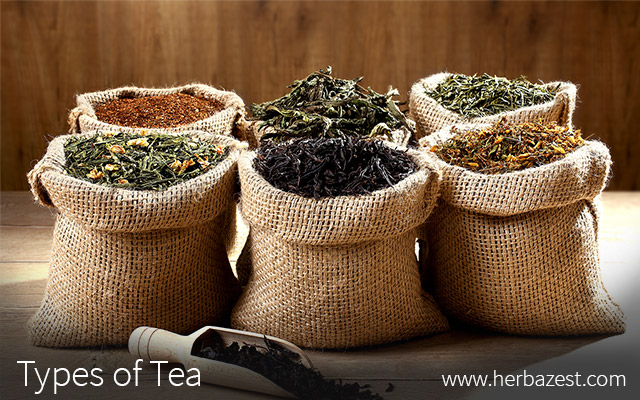The three varieties of Camellia sinensis (var. sinensis, var. assamica, and var. cambody) are the source of all tea types, which can be classified under six broad categories depending on the method used to process the tea leaves.
Black Tea
Black tea is the result of an oxidation process, during which the tea leaves acquire a rich flavor and a dark hue. In China, it is called “red tea” because of the color of the infusion obtained from its leaves. Because it has a long shelf-life, black tea is the most popular type used for the tea bag industry. Some of the most common specialty black teas, such as Asaam and Darjeeling, come from India, whereas Ceylon tea is produced in Sri Lanka.
Green Tea
In contrast to black tea, this is a non-oxidized type of tea. Green tea leaves are the ones that most resemble the original, freshly harvested tea plant leaves, which are collected in the early spring. So, they are high in nutrients and essential oils. With a short shelf-life of six to eight months, green tea is considered the most fresh and valuable type of tea, and it is mainly produced in China and Japan.
White Tea
Green and white teas contain higher levels of antioxidants than the black and Oolong types.
White tea can be obtained from the most tender leaves and buds, which have a natural, almost-white fuzz, or it can be made out of larger leaves. After a natural process of oxidation that takes two to three days, the withered tea leaves are baked twice at a very low heat. This type of tea is rich in antioxidants, and it is considered not only the least processed, but also one of the most beneficial for immune health. White tea is mainly produced in China, particularly in the province of Fujian.
Yellow Tea
This is a rare and valuable type of tea that is made only in China, using tender tea buds that are plugged in early spring. Moreover, it is hardly ever seen in the West, where it is often confused with green tea because of its similar appearance. Yellow tea is produced through a gentle drying and wrapping process, which gives it a characteristic greenish yellow hue as well as a sweet taste with floral notes. Yellow tea is high in amino acids, antioxidants, and vitamins, and it is consumed chiefly to relieve digestive issues as well as to manage weight.
Oolong Tea
This type of tea is produced mainly in mountainous areas of China and Taiwan and undergoes a delicate process of semi-oxidation that can last many hours. Depending on its oxidation level (10 - 80%), oolong can resemble green or black tea, and it can be shaped into small pellets or into long, warped leaves. The less oxidized the leaves, the more gentle, floral, and aromatic Oolong tea becomes.
Pu erh Tea
Pu erh tea is a dark type, produced mainly in the Chinese province of Yunnan. It can be found in two types: Sheng pu erh, which is exposed to heat and moisture until it ferments, and Shou pu erh, which is aged under controlled temperatures for three to five years. This type of tea is believed to increase in health benefits as it ages, and it is prized for its medicinal properties, particularly for improving eye health and cognitive abilities.
For millennia, the tea plant has been the source of all tea types. Each one is obtained through different methods, and each has a distinct set of wonderful flavors, colors, and health benefits.
Sources
- Modern Tea: A Fresh Look at an Ancient Beverage, pp. 35, 37, 41
- Tea and Tea Products: Chemistry and Health-Promoting Properties, pp. 9 – 10
- The Art and Craft of Tea, pp. 41 - 42, 45
- The Tea Book, pp. 24 - 26, 33, 47




